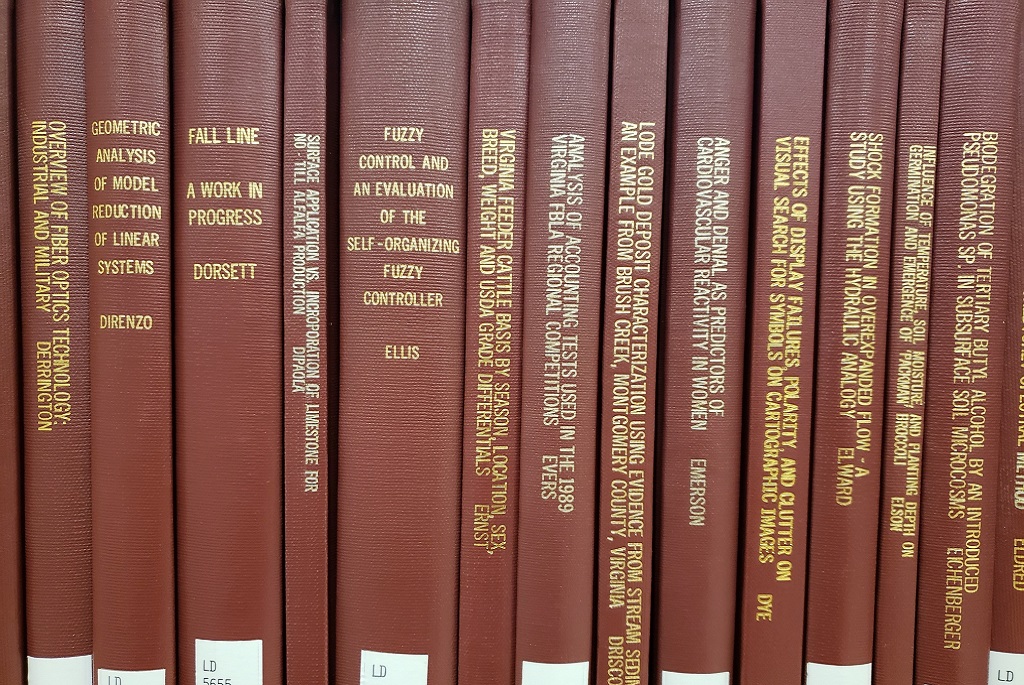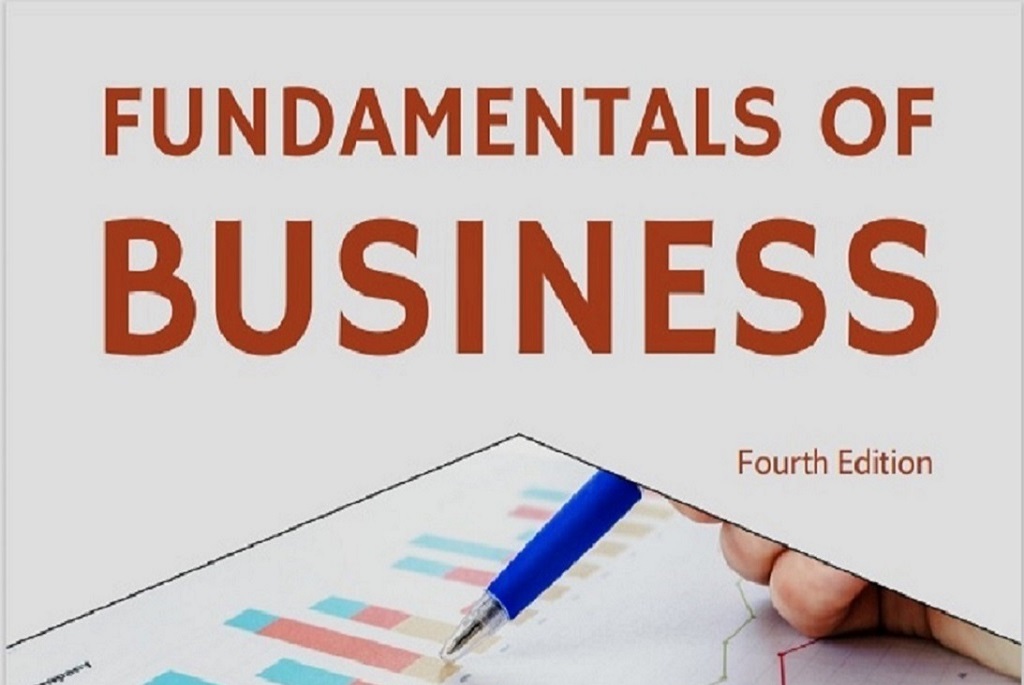VTechWorks
VTechWorks provides global access to Virginia Tech scholarship, including journal articles, books, theses, dissertations, conference papers, slide presentations, technical reports, working papers, administrative documents, videos, images, and more by faculty, students, and staff. Faculty can deposit items to VTechWorks from Elements, including journal articles covered by the University open access policy. Email vtechworks@vt.edu for help.
Communities in VTechWorks
Select a community to browse its collections.
Recent Submissions
Toward Collaborative Adaptation: Assessing Impacts of Coastal Flooding at the Watershed Scale
Mitchell, Allison; Bukvic, Anamaria; Shao, Yang; Irish, Jennifer L.; McLaughlin, Daniel L. (Springer Nature, 2022-12)
The U.S. Mid-Atlantic coastal region is experiencing higher rates of SLR than the global average, especially in Hampton Roads, Virginia, where this acceleration is primarily driven by land subsidence. The adaptation plans for coastal flooding are generally developed at the municipal level, ignoring the broader spatial implications of flooding outside the individual administrative boundaries. Flood impact assessments at the watershed scale would provide a more holistic perspective on what is needed to synchronize the adaptation efforts between the neighboring administrative units. This paper evaluates flooding impacts from sea level rise (SLR) and storm surge among watersheds in Hampton Roads to identify those most at risk of coastal flooding over different time horizons. It also explores the implications of flooding on the municipalities, the land uses, and land covers throughout this region within the case study watershed. The 2% Annual Exceedance Probability (AEP) storm surge flood hazard data and NOAA’s intermediate SLR projections were used to develop flooding scenarios for 2030, 2060, and 2090 and delineate land areas at risk of combined flooding. Findings show that five out of 98 watersheds will substantially increase in inundation, with two intersecting multiple municipalities. They also indicate significant inundation of military, commercial, and industrial land uses and wetland land covers. Flooding will also impact residential land use in urban areas along the Elizabeth River and Hampton city, supporting the need for collaborative adaptation planning on hydrologically influenced spatial scales.
Limitations of trait‐based approaches for stressor assessment: The case of freshwater invertebrates and climate drivers
Hamilton, Anna T.; Schäfer, Ralf B.; Pyne, Matthew I.; Chessman, Bruce; Kakouei, Karan; Boersma, Kate S.; Verdonschot, Piet F. M.; Verdonschot, Ralf C. M.; Mims, Meryl C.; Khamis, Kieran; Bierwagen, Britta; Stamp, Jen (Wiley, 2019-09)
The appeal of trait-based approaches for assessing environmental vulnerabilities arises from the potential insight they provide into the mechanisms underlying the changes in populations and community structure. Traits can provide ecologically based explanations for observed responses to environmental changes, along with predictive power gained by developing relationships between traits and environmental variables. Despite these potential benefits, questions remain regarding the utility and limitations of these approaches, which we explore focusing on the following questions: (a) How reliable are predictions of biotic responses to changing conditions based on single trait–environment relationships? (b) What factors constrain detection of single trait–environment relationships, and how can they be addressed? (c) Can we use information on meta-community processes to reveal conditions when assumptions underlying trait-based studies are not met? We address these questions by reviewing published literature on aquatic invertebrate communities from stream ecosystems. Our findings help to define factors that influence the successful application of trait-based approaches in addressing the complex, multifaceted effects of changing climate conditions on hydrologic and thermal regimes in stream ecosystems. Key conclusions are that observed relationships between traits and environmental stressors are often inconsistent with predefined hypotheses derived from current trait-based thinking, particularly related to single trait–environment relationships. Factors that can influence findings of trait-based assessments include intercorrelations of among traits and among environmental variables, spatial scale, strength of biotic interactions, intensity of habitat disturbance, degree of abiotic stress, and methods of trait characterization. Several recommendations are made for practice and further study to address these concerns, including using phylogenetic relatedness to address intercorrelation. With proper consideration of these issues, trait-based assessment of organismal vulnerability to environmental changes can become a useful tool to conserve threatened populations into the future.
Design and Analysis of an Innovative run-flat system for pneumatic tires
Saraswat, Abhishek (Virginia Tech, 2024-10-21)
Pneumatic tires have been an essential part of the automobile since the early 20th century. Providing load carrying, braking, accelerating and turning capability as well as a certain degree isolation from the road, they fail to function without the presence of air pressure inside them. Run-flat tire systems allow the vehicle to continue running with reduced driving speeds for a certain specified range in case of loss of air pressure due to puncture or damage. In this work, the design of self-supporting and insert supported run-flat systems was approached using CAE.
Two tire FE models of sizes 175/70 R14 and 175/60 R18 were used in this study. All structural and thermal simulations were done using ABAQUS and ENDURICA software was used for fatigue life simulation. Distance travelled before failure was used as the primary parameter for design evaluation along with secondary parameters of contact patch area and contact pressure, tire temperature profiles and rolling resistance. Ride comfort and handling characteristics are important performance parameters for a tire. Thus, a limited study to quantify the effect of run-flat system on the ride and handling properties was also conducted. The target design values for maximum load were fixed according to ETRTO standards while the maximum operating speed and the desired mileage in deflated condition was fixed at 45 mph and 50 miles, respectively.
The initial part of the design process for the auxiliary supported design involved using a rigid cylindrical structure of varying height and thickness as a rim-mounted run-flat insert to get estimate of life of tire structure for different levels of deformation. The results were then used as input for designing a deformable rim mounted insert using reinforced rubber material.
For the self-supported design, the sidewall of the tire was modified to increase its section thickness from an average value of 5 mm in the original design to 10 mm and 15 mm by addition of rubber material. For each thickness value, three designs based on the location in the tire structure where the material addition began relative to the belt edges of the tire were created. The designs were compared in terms of their fatigue life and contact patch area.
For both types of run-flat designs, a candidate design, which satisfied the performance criteria, was found using the simulation results for the tire and run-flat system. It was concluded that a simulation-based approach can be used to design innovative run-flat systems for pneumatic tires.
Toward Rapid Silica Analysis of CPDM Samples using Portable Fourier Transform Infrared Spectrometry
Greth, August Vidal (Virginia Tech, 2024-10-21)
Continuous personal dust monitors (CPDMs) are widely used to monitor respirable coal mine dust (RCMD) to reduce miners' exposures, but they are unable to directly assess respirable crystalline silica (RCS) concentrations, which are linked to the recent rise of respiratory diseases among coal miners. This incompatibility is due to the composition of the CPDM's internal filter stub. The stub consists of a fibrous borosilicate filter attached to a polypropylene (PP) backing and a polytetrafluoroethylene (PTFE) binder, which interferes with standard analytical techniques. This study developed a method for indirect analysis of dust collected on the CPDM filter stub using portable direct-on-filter Fourier Transform infrared spectroscopy (DOF-FTIR) to rapidly quantify quartz, the primary analyte of silica in coal mines. The research consisted of four studies that developed and evaluated a three-step process for dust recovery, deposition, and analysis. These studies investigated techniques for separating dust from the CPDM filter media, compared mechanisms for dust deposition onto various substrates, and assessed the ability of FTIR and scanning electron microscopy with energy dispersive X-ray (SEM-EDX) to analyze the mineral characteristics of recovered dust. The resulting method involves submerging CPDM filter stubs in 5 mL of isopropyl alcohol (IPA) and shaking them for 1 minute, followed by deposition of the dust onto a 25-mm polyvinyl chloride (PVC) filter using a syringe-based system. The PVC filter was then scanned at four 8-mm offset locations at 90° intervals from the center. Evaluating this method using field and lab-generated CPDM filter stubs revealed low dust recovery from the stubs. It was also observed that results tended to underpredict the quartz mass as the total sample mass increased. Though adjustments for recovery can be made using a scale and the method can be limited to lower mass samples, more efforts can be made to investigate better dust recovery and improve quartz determination of the samples to increase confidence in the method.
Ecology and conservation of the Såli (Micronesian Starling, Aplonis opaca) in the presence of the invasive Brown Treesnake (Boiga irregularis) in Guam, Mariana Islands
Kastner, Martin (Virginia Tech, 2024-10-21)
The world's islands are of singular importance from a conservation perspective because they hold a disproportionate share of global biodiversity. However, island ecosystems are fragile, and the introduction of invasive species poses an especially grave threat to their species. My research took place on the island of Guam, which has been particularly hard hit by invasive species in recent history. The introduction of the invasive Brown Treesnake (BTS; Boiga irregularis) to Guam in the mid-20th century caused the extinction of the vast majority of its avifauna. Of the remaining bird species, the native Såli (Aplonis opaca) is a forest starling now limited to breeding and roosting in certain urbanized areas on the island. Previous research has shown that although Såli adults appear to have high survival, their fledglings are highly vulnerable to predators. My research focused on refining our understanding of how BTS are impacting Såli ecology and survival, and how BTS management can benefit Såli conservation. In my first chapter, I conducted the first field study to investigate the influence of both prey and predator sizes on the frequency of ingestion success by snakes. I found that nearly half of ingestion attempts by BTS on fledgling Såli were unsuccessful, and that BTS routinely pushed the upper limits of their capacity to swallow prey. These results suggest that relatively small BTS pose a greater predation risk to birds than previously recognized, and broaden the size range of BTS that should be targeted in management efforts for avian conservation. In my second chapter, I investigated a potential life-history trade-off for Såli between the proximity of nest sites to foraging areas and the risk of fledgling predation by BTS. I found that Såli nesting closer to the forest make more yearly nesting attempts, but that fledgling survival was higher the farther their nest site was from the forest. Såli therefore balance potential fecundity with predation risk to fledglings in their selection of nest sites. In my third chapter, I examined the survival response of fledgling Såli to the suppression of BTS. I found that snake control did not lead to a change in fledgling survival from the pre-treatment baseline or in comparison to areas where snakes were not controlled, and that there was no shift from snake predation to other causes of mortality. Changes to the strategies or tools employed will therefore be required in order for future BTS control efforts within similar habitats to effectively improve avian survival. This body of work demonstrates that BTS are affecting Såli in unexpected ways, and offers new guidance on how to manage damaging invasive species for native species conservation.


